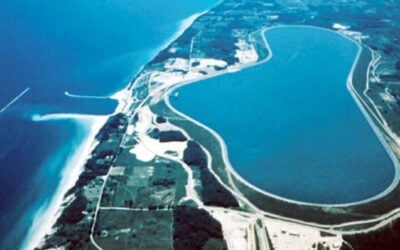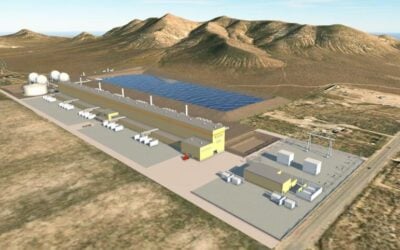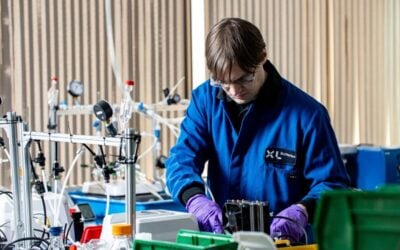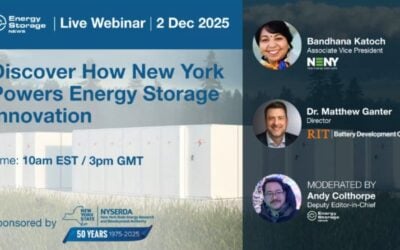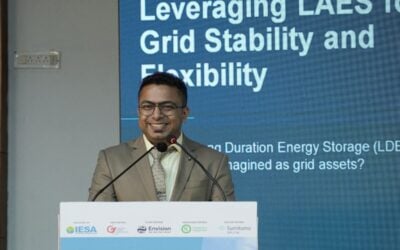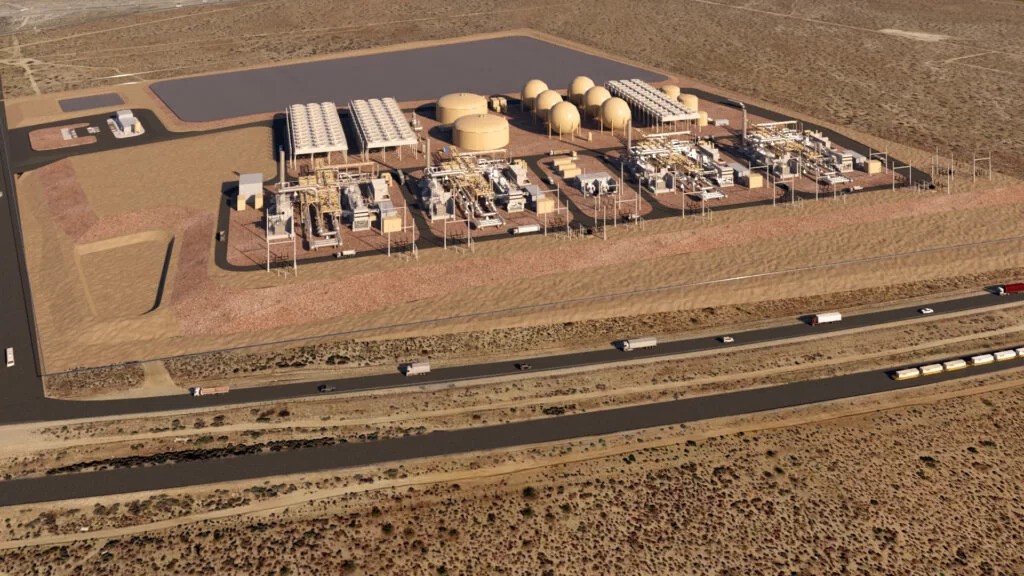
The US Department of Energy’s (DOE) Loan Programs Office (LPO) has made a conditional commitment for a loan to long-duration energy storage (LDES) developer and operator Hydrostor of up to US$1.76 billion.
If finalised, the loan would be used to help fund the Willow Rock Energy Storage Centre, a 500MW/4,000MWh, 8-hour advanced compressed air energy storage system (A-CAES) in Eastern Kern County, California, led by Hydrostor subsidiary GEM A-CAES.
Compressed air energy storage (CAES) charges by pressurising air and funnelling it into a storage medium, often a salt cavern, and discharges it by releasing the compressed air through a heating system, which expands air before it is sent through a turbine generator.
A-CAES (Premium access article) works in much the same way, but it takes the heat from the compressor and runs it through heat exchangers to store it in pressurised water. The water is then held in a reservoir and pushed down into a cavern to push the air up and out when discharging, in a process called hydrostatic compensation.
Try Premium for just $1
- Full premium access for the first month at only $1
- Converts to an annual rate after 30 days unless cancelled
- Cancel anytime during the trial period
Premium Benefits
- Expert industry analysis and interviews
- Digital access to PV Tech Power journal
- Exclusive event discounts
Or get the full Premium subscription right away
Or continue reading this article for free
With CAES, less than 50% of energy is typically recoverable. Thermal energy from compression is released as waste in CAES; the process also generates power at an inconsistent rate dependent on the remaining underground air pressure.
GEM A-CAES says these issues can be improved upon by pairing a proprietary thermal energy storage system with the process, allowing Willow Rock to capture, store and reuse heat from the compression cycle.
Additionally, GEM A-CAES uses water from an above-ground reservoir to maintain constant pressure in the cavern; and water condensed during the compression process will be captured and reused. Because of these improvements, A-CAES systems can be installed in more underground conditions than traditional CAES.
The US$1.76 billion loan would be structured as US$1.5 billion of principal and approximately US$280 million of capitalised interest to GEM A-CAES.
LPO borrowers are required to implement a community benefits plan (CBP) to ensure they engage with the community and labour groups to create good-paying jobs and improve the community’s well-being.
GEM A-CAES says it has committed to partnering with the local economic development agency to create educational pathways to employment and invest in the community, such as funding an urban search and rescue unit for the county and improving local health services.
This project meets the requirements of an Innovative Energy and Supply Chain project under LPO’s Title 17 Clean Energy Financing Program. Innovative Energy projects deploy new or significantly improved technology. Innovative Supply Chain projects deploy or significantly improve technology in manufacturing or manufacture a product that represents a new or significantly improved technology.
In 2023, Hydrostor signed a 25-year power purchase agreement (PPA) with Community Choice Aggregator (CCA) Central Coast Community Energy for the Willow Rock Energy Storage Center.
Plans for CAES technology are also taking shape in Jiangsu, China. Installation work recently started on a CAES project the country claims to be the largest of its kind in the world.
This A-CAES announcement comes during a series of announced funding for energy projects across the US coming in from the DOE’s LPO before Donald Trump begins his second term as president. Energy-Storage.news’ analysis found in December that DOE grant and loan activity had soared in the wake of Trump’s election win (Premium access article).

